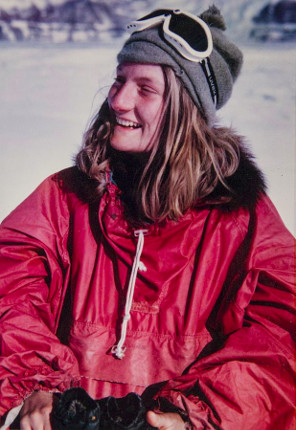Rosemary Askin

Antarctic geologist (1949-)
In a trailblazing year for women in the Antarctic, three women were included in New Zealand’s 1970 team: Ann Chapman, leading the Waikato team; Barbara Spurr, wife of the Canterbury University leader, and Rosemary Askin, carrying out work deep in the field, aged just 21.1 Askin earned high praise for her fortitude, and the “outstandingly successful” expedition resulted in Antarctica’s richest-known site of fossil fish remains, upon which Askin then based her PhD.2 Askin returned the Antarctic many times, completing expeditions to diverse parts of the continent, and has Mount Askin in the Darwin Mountains named after her. She was part of a team that found mammal fossils in the frozen continent, helped demonstrate that Antarctica went through an abrupt warming cycle 15 million years ago, and spearheaded the development of a polar rock repository at Ohio State University in the United States.3
Image: Rosemary Askin during her first field season, 1970, Southern Victoria Land, Antarctica. Source: Skelton Névé, Wikimedia Commons.
References:
1. ‘Antarctic.V6.1.1971.Pdf’, accessed 2 August 2017, http://www.antarctic.org.nz/pdf/Antarctic/Antarctic.V6.1.1971.pdf.
2. Victoria University of Wellington, 1899-1999, accessed 2 August 2017, https://books.google.com/books/about/Victoria_University_of_Wellington_1899_1.html?id=3GbQsYgk4UsC.
3. Rosemary Askin Askin in Skelton Névé et al., ‘Rosemary Askin - Wikipedia’, accessed 2 August 2017, https://en.wikipedia.org/wiki/Rosemary_Askin.
This profile is part of the series 150 Women in 150 Words that celebrates women’s contributions to expanding knowledge in New Zealand, running as part of our 150th Anniversary.
